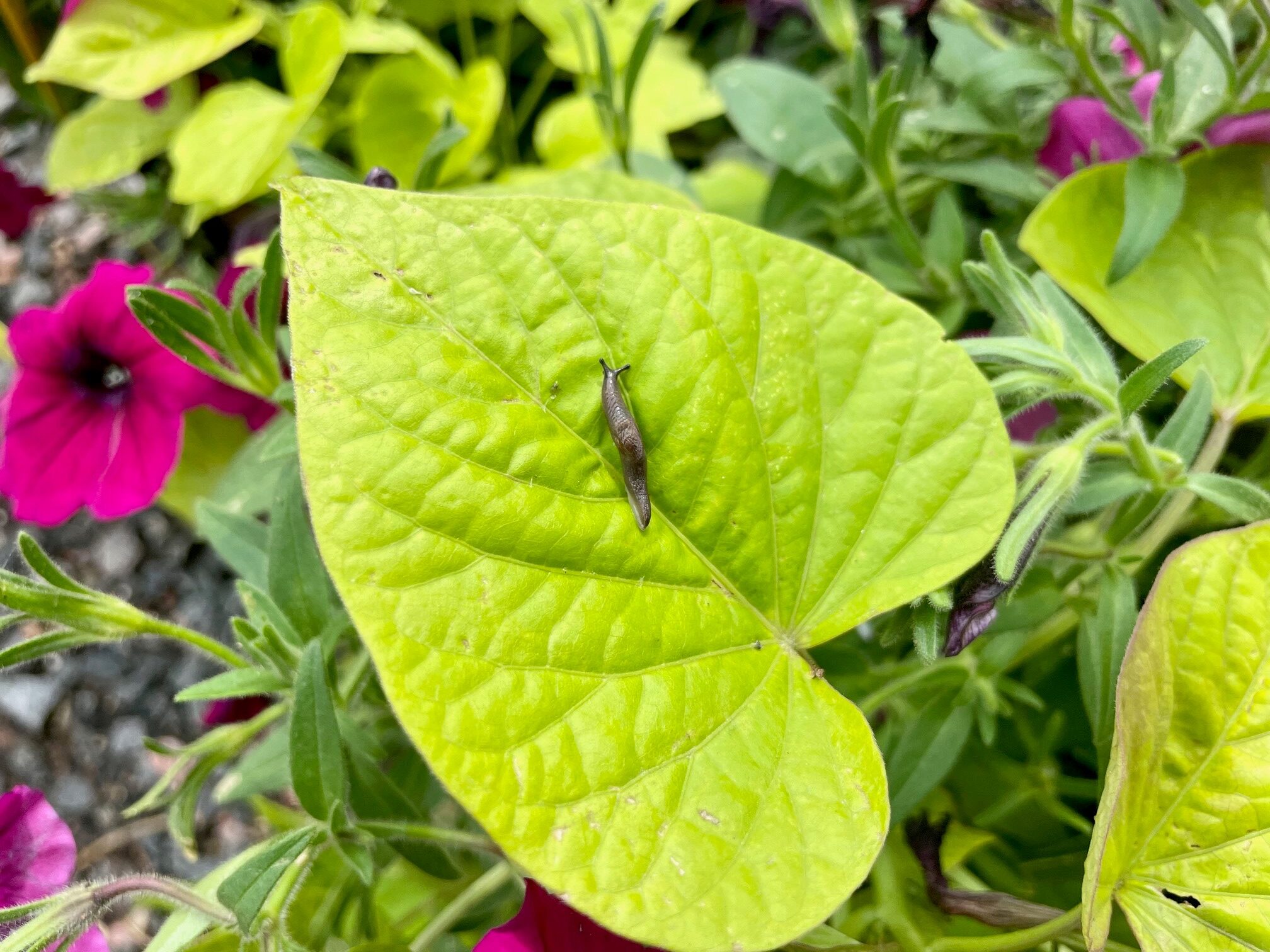Not as much of a problem in Colorado, due to our hot, dry conditions. But slugs are one of the most common garden pests, though unlike most other chewing critters you find in your garden, they aren’t insects. Instead, slugs are land-dwelling mollusks that are more closely related to clams than beetles or caterpillars. Facing a slug infestation is serious business, filled with slime trails, damaged leaves, and missing seedlings. But effective organic slug control is both manageable and affordable, when you’re armed with the following tips and information.
Unlike snails, slugs don’t carry a shell on their backs. Instead, they have a small, saddle-like plate called a mantle. Because they lack the protection of a shell, slugs tend to feed primarily at night or on rainy days, when they’re protected from the sun. During the day, they tend to hide under rocks or in other dark, moist locations.
Since slugs feed primarily at night, gardeners tend to notice the damaged plants, but they can’t find the culprit when they search the garden during the day.
If you really want to know how to get rid of slugs in the garden, you first have to learn how to properly identify the damage they cause. Here are some sure-fire signs that a garden slug control program is called for:
- If you come out to the garden in the morning and nothing remains of your seedlings but leaf mid-ribs and stumps, slugs are a likely culprit.
- Perfect, round holes in tomatoes, strawberries, and other soft fruits can also indicate a need to learn how to get rid of slugs in the garden.
- Ragged holes in leaf edges and centers is another sign of slugs.
- Slime trails on plants, walls, rocks, or mulch are another tell-tale sign of slug troubles.
This first strategy doesn’t involve products, traps, or barriers. Instead, it involves the actions you take in the garden.
Slug prevention techniques involve things like:
- Avoid using loose mulches where slugs are prevalent. Skip straw, hay, and shredded wood mulches and opt for compost or leaf mold instead.
• Avoid watering the garden late in the day. Since slugs (and their eggs) thrive in wet conditions, always water in the morning so the garden dries by nightfall.
• Switch from overhead irrigation to drip irrigation which targets water at the root zone and keeps plant foliage dry.
• Plant resistant plants. Slugs dislike plants with heavily fragranced foliage, like many common herbs. They also dislike plants with fuzzy or furry foliage.
• Slugs are a favorite food of many different predators. Encourage birds, snakes, lizards, toads, frogs, and ground beetles to make a home in your garden. Building a “beetle bump” is one of the most effective ways to control slugs naturally.
Trap slugs using boards or newspapers
Lay 2×4’s between crop rows at dusk and then the following afternoon, when the slugs take shelter beneath them to avoid the sun, flip over the boards and collect the slugs or cut them in half with a sharp scissors. You can also easily trap them underneath inverted watermelon rinds placed throughout the garden.
Another version of trapping is to roll up a newspaper, soak in water and place in the garden. Simply pick up the newspaper with slugs sleeping in the folds and discard.
Set Up a Slug Bar
You know we had to mention everyone’s favorite/least favorite slug control: beer-baited traps. Yes, no list of tips on how to get rid of slugs in the garden is complete without a mention of beer traps. The yeast in the beer attracts slugs who then fall in and drown. It works so be sure to empty and re-bait the traps daily.
Use an Organic Slug Deterrent
When figuring out how to get rid of slugs in the garden, organic slug baits like Natural Guard Slug & Snail Bait that use Iron Phosphate or Natural Guard Diatomaceous Earth using silicon dioxide from ocean living Diatom shells is a must. Sprinkle this deterrent on the soil surface around affected plants. The slugs will become uncomfortable when feeding and avoid the treated area. This product can even be used in the vegetable garden around food crops.

